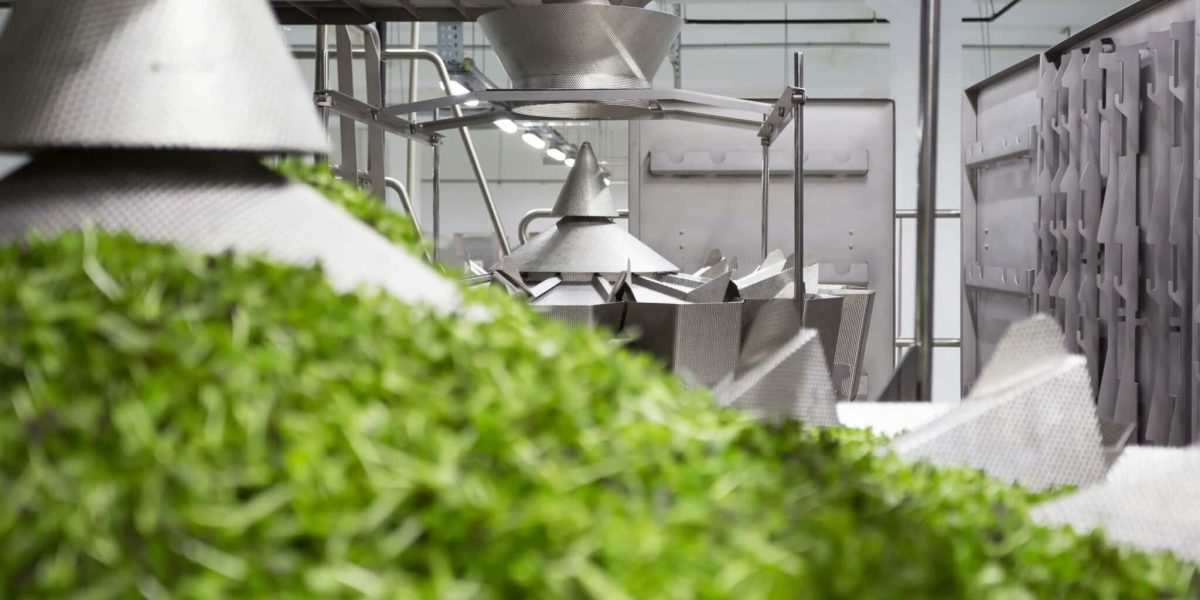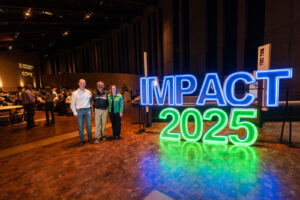In a thought-provoking podcast discussion, R. Mukund, CEO and Founder of Benchmark Gensuite, recently sat down with David Metcalfe, CEO of Verdantix, to explore the evolving landscape of sustainability management and the transformative role that artificial intelligence (AI) will play in the years to come.
Hosted by Verdantix, the Curiosity Applied podcast is a must listen for sustainability leaders, investors and members of the C-Suite seeking to safely guide their businesses through a changing global landscape.
David Metcalfe: Hello. I’m David Metcalfe, the CEO of Verdantix. Verdantix is the essential thought leader for world-enhancing innovation. I’d like to welcome you to the Curiosity Applied podcast, where we debate topical issues relating to the scale, shape and velocity of change in the business world. Today, we’ll be talking about best practices for digitizing sustainability. What are the primary ways in which firms should use digital solutions to improve sustainability performance? How can ESG risk management be advanced? What is the potential for AI in 2025?
I’d like to welcome R. Mukund, who’s the CEO of Benchmark Gensuite, one of the world’s leading EHS and sustainability software firms. Prior to Benchmark Gensuite, Mukund worked in senior roles at GE and he holds a PhD in environmental engineering from the University of Illinois Urbana-Champaign. Welcome, Mukund.
To start off the discussion today… What I’m really interested in is what you see as sustainability business challenges in 2025.
Mukund: Thanks. With regard to the question you asked in terms of what are the key drivers or key challenges, I would say, from an organizational or enterprise perspective, the three things that we’re hearing are enhanced data acquisition, improved governance, and process streamlining.
Those things are top of mind for the sustainability leaders that we speak with as they look at 2025 and 2026, getting ready for what is on the horizon.
David Metcalfe: Great, and to what extent would you say that you’re seeing the level of ambition when they think about digitization as increasing, given the business context around sustainability, where I think there’s more uncertainty in 2025 in the US than there has been previously.
Mukund: Oh, great question. I think what we are seeing is that the convergence of multiple drivers is causing sustainability leaders in the enterprise to think about the needs for that sort of consolidation of approaches and solutions such that the outcomes, if you will, can be better addressed, regardless of the vagaries of what is, quote, unquote, required or not required.
Currently, the reality is that there is a general convergence of those requirements that is causing a strong interest and a strong motivation, as I said, to being able to acquire data, have better governance, and to not spend as much time doing it and then redoing it at the moment it’s done, because you’ve got to get ready for the next cycle. How do you get real-time data? Real-time, good data? That’s what I think is great. And it’s because of that convergence of requirements.
David Metcalfe: How much do you think those requirements have changed in the last three years? Are we seeing the more strategic thinking around digitization, or are we still maybe locked in the world of point solutions, tackling the different sustainability challenges with siloed approaches?
Mukund: I think what we are seeing is more of the functions as this, as what I call the convergence theme, is becoming more visceral, if you will, more easily perceived. What we’re seeing is that the functions that have historically been, you know, doing activities separately are now coming together and needing to find a way to operate with each other in a more cohesive way.
So while I would term it more sort of siloed solutions, rather than point solutions. Because I think even if there are solutions or a platform or whatever, typically they’ve been within the silo of say finance or EHS or sustainability, but now, the convergence of all of those measures is pulling all that together. So I think this concept of getting systems to talk to each other is a big driver within each of those functions. There are still individual distinct functions that will probably remain siloed, but they need to talk to each other better, rather than, you know, once a year, in some sort of patched together way.
David Metcalfe: That’s a really interesting distinction to make, and I definitely agree with it, that idea of different functions have got their own siloed solutions that may be quite comprehensive in terms of their functionality, but not enabling that connectivity across longer chain processes.
As we’re talking about these industry sustainability challenges, I know Mukund, your company does a lot of work within the manufacturing space. Are you seeing specific new sustainability requirements from those companies?
Mukund: I think what we are seeing from them is twofold. One is, how do we get these data streams to get captured so we have some more automation and connectedness with what is going on in the enterprise?
And that should be “simple” but the reality is that if you were building a plant today, you would put all your sensors in, you would have data acquisition systems, and be connected. But we’ve also got to recognize that 90% or 95% of operating sites already exist. Some of them have existed for 100 plus years, certainly 20 years, 15 years, and these things weren’t put in place then obviously. So we have a patchwork out there. What we are seeing from our customers is that these enterprises are saying, how do we get better? And there’s other drivers, there’s operational efficiency, there’s cost, there’s all the other things that are driving it, but it’s still siloed.
Going back to my earlier point about, you know, that’s a manufacturing function or a supply chain function doing its thing. From a sustainability function, how do you connect that so that all those functions that have those siloed systems can get tied in? So that’s the other piece. How do we get more productive with how we’re compiling that data and making it more assurance ready? How do you get more enterprise engagement? Because you cannot engage your functions if you keep bugging them for data and then you bug them again two weeks after they gave you the last set of data. That cannot be how you operate. I think that’s what we’re hearing from our customers. It’s a frustration of I don’t have the data, and yet, in order to collect it, I’ve got to annoy everybody, and then they are no longer our allies in sustainability.
David Metcalfe: Yeah, and it’s interesting because that also applies in terms of supplier engagement. We’ve frequently figured out suppliers are getting fed up with being asked to complete survey after survey. Well, related to this, then do you think on the requirements side, that there’s a need to connect these siloed systems? There’s a need to get better integration of the overall sustainability data management system. That usually implies that a new vision and governance approach is needed, that you can’t be a chief sustainability officer who buys a software product and then goes out and also provides the data for it. What are you seeing? Are CSOs working a lot more with Chief Information Officers?
Mukund: We’re seeing them work more with information officers when it comes to data aggregation. That is probably where we are seeing more of that activity, because, especially as some of this data is showing up in financial reports, or in various filings or within the corporate reporting system, it’s elevating the importance in the visibility and accountability of that data. So, as a result, that’s where the IT security and data officers are coming in to verify the quality and integrity of the data.
And we are seeing some level of connectedness, with the sustainability officer asking the question, how are the individual functions compiling this data? What systems do you have? But not as much, because I think it’s still a bit of a turf battle, if you will. I mean, you know, everybody’s got their little fiefdom. It’s my function, your function. I don’t think CSOs necessarily, yet, have that clout to dictate what a specific function can and will do, other than to say, you need to be prepared to provide this kind of data on this kind of frequency and at this level of accuracy. If not, then there are consequences.
David Metcalfe: Okay, interesting. What are those digital solutions out there that chief sustainability officers, whether they’re part of the government or in a chemicals company or promoters, what should they be aware of? Mukund, if I can ask you that question, what do you think CSOs should really get educated about and considering to invest in for 2025?
Mukund: It’s a great question. For chief sustainability officers who have the push from their board and their C suite, to say this matters, and usually that matters because of a vision that the C suite has that’s reflective of the operating and market profiles of the enterprise that they lead.
And when you look at it that way, it represents an opportunity and a risk — opportunities for demonstrating leadership and differentiating in the marketplace and risk as in managing whatever the downsides are that that this enterprise may be aware of and needs to be prepared for, and that its stakeholders would expect it to be prepared for. And I think CSOs then can align with those corporate objectives in a much more effective way to drive the kind of systems for transparency and visibility that those executives and board would ask for and be particularly interested in. Because what board is not interested in leveraging opportunities and mitigating risks? That is what the board is for.
So if a CSO is able to align with those objectives, then there’s that positive energy that you get from being aligned. And then the systems then connect back to your operating profile. I’m a big believer that you have to start with what your operating profile looks like. Once you know that, once you have an idea of what your operating profile, your market profile, look like, you can start thinking about what type of systems do you want to invest in. In some industries, that may be IoT. In others, it may be AI-driven. And others, it might just be boots on the ground. We’ve got to implement operational systems that allow us to compile, collect this data and build a starting point. You can’t go to the moon when you don’t even have the fundamentals in place.
And I feel like, in many cases, CSOs, they’re also hostage to the fact that reports are due in March. So now you’re going to react to that, and that’s when you have to sort of walk and chew gum at the same time, if you will. You’ve got to do that report for March, but you also have to be thinking about next March, and whether you’re going to do this the same way then, and whether your systems can enable that. I think that is really the top priority, and then that will align with the board’s objectives of opportunity and risk management.
David Metcalfe: I think you’ve made a great point now Mukund, which is that the historical focus of Chief Sustainability Officers has been on digitizing the data collection for reporting output. But now, they need to be thinking about risk management and performance improvement. These may require very different digital systems that are not tied into the whole flow of information that goes from suppliers, product LCA, and internal ERP systems, and then out to different stakeholders. So maybe I was asking the wrong question — we shouldn’t be thinking about what technologies you could buy, but rather about the executive vision and the operating context.
Let’s switch over to talking about AI. When you think about the potential for AI, before people leap into it, they obviously need to consider the guardrails, the framework, and the due diligence they need to do before using AI tools for sustainability use cases. What would you recommend in that context?
Mukund: That’s a great question. AI brings up three main concerns that research is showing: the digital divide, job insecurity, and data privacy.
Ensuring equitable access to digital technologies is crucial for long-term sustainability. People are also concerned about technological advances leading to job displacement and instability, so upskilling talent and establishing methods to combat displacement is important.
Data privacy and security continue to be major concerns as well.
David Metcalfe: Okay, so before people leap in, they need to put all these guardrails in place. Mukund, I know at Benchmark Gensuite, this is something you’ve been working on, and you have experience engaging with your customers. Where do you think they’ve got to so far in terms of seeing the pluses and deltas of using AI for EHS and sustainability?
Mukund: In the corporate world, it’s still a very data-focused activity. Companies are working on presenting their sustainability story, either in a mandated way or in a way they want to present it. The other part is using data to drive operational sustainability improvements.
We’ve seen that AI can be used for anomaly identification and analysis, providing insights, and making comparisons to help spot issues that would otherwise be a manual and intensive activity.
On the reporting side, there’s a lot of excitement around using AI to handle the ambiguity and malleability of sustainability data, which is different from financial reporting. AI can help with ad hoc reporting and disclosure requests, leveraging the data companies already have in order to craft responses more efficiently.
David Metcalfe: One of the questions I have, and we have at Verdantix have as an AI applied research practice, is that the analysts in our team tell me 2025 was all going to be about agentic AI agents. So let’s maybe push the envelope a little bit for sustainability, technology, and innovation. Mukund, what do you think? Is 2025 going to be a year for sustainability AI agents, or are we still quite a way away from the Matrix appearing as part of what CSOs do?
Mukund: I think it will be a two-part effort. In 2025, we’ll be using AI to assist and help improve our current workflows, making them more productive. This may lay the groundwork for more advanced AI agents in the future, but the data set and knowledge base for sustainability is still not evolved enough to support truly autonomous AI agents.
We need to focus on using AI to enhance our current processes and build the foundation before we can expect AI agents to take on more autonomous tasks. The guardrails and applicability of the AI need to be carefully considered to avoid generating unreliable or irrelevant outputs.
David Metcalfe: If you were to think about the space shuttle analogy — where a Chief Sustainability Officer can either go and buy a pre-built space shuttle or build one from Lego blocks — how should they think about AI?
Do you see any of these really big wins from AI, or is it more the Lego blocks approach, where you have to look at lots of use cases that collectively give you that space shuttle impact?
Mukund: Probably more of the latter right now, because I think the industry is evolving. What’s state of the art is evolving. It will not become a science until we evolve the art a little bit further, and that’s going to take a little bit more effort. But having said that, I think we’re going to find solutions very quickly in the market, initially that will purport to be the complete “fill in the blank” solution. But the reality is that, you know, in any enterprise, there’s going to be sufficient organizational and operational complexity that the AI solution will need to be adapted and fit for purpose. So, we will have a fit-to-purpose exercise that will be needed, and it’s probably going to take some time to get there.
David Metcalfe: Well, that’s wonderful. I love to finish on a very sensible, practical note, as opposed to some big bang theory. Mukund from Benchmark Gensuite, thank you very much indeed. It’s been great listening.



